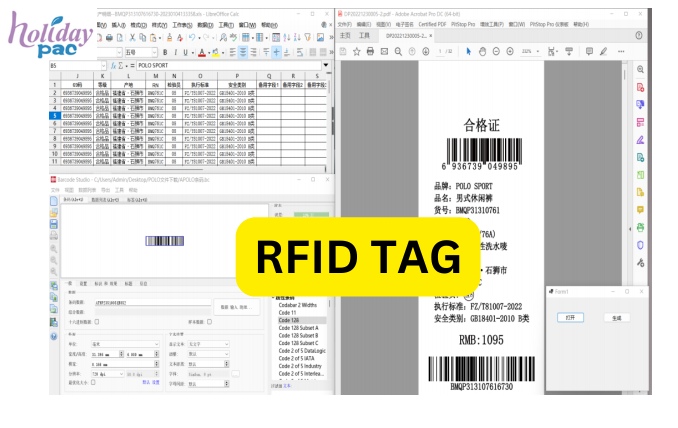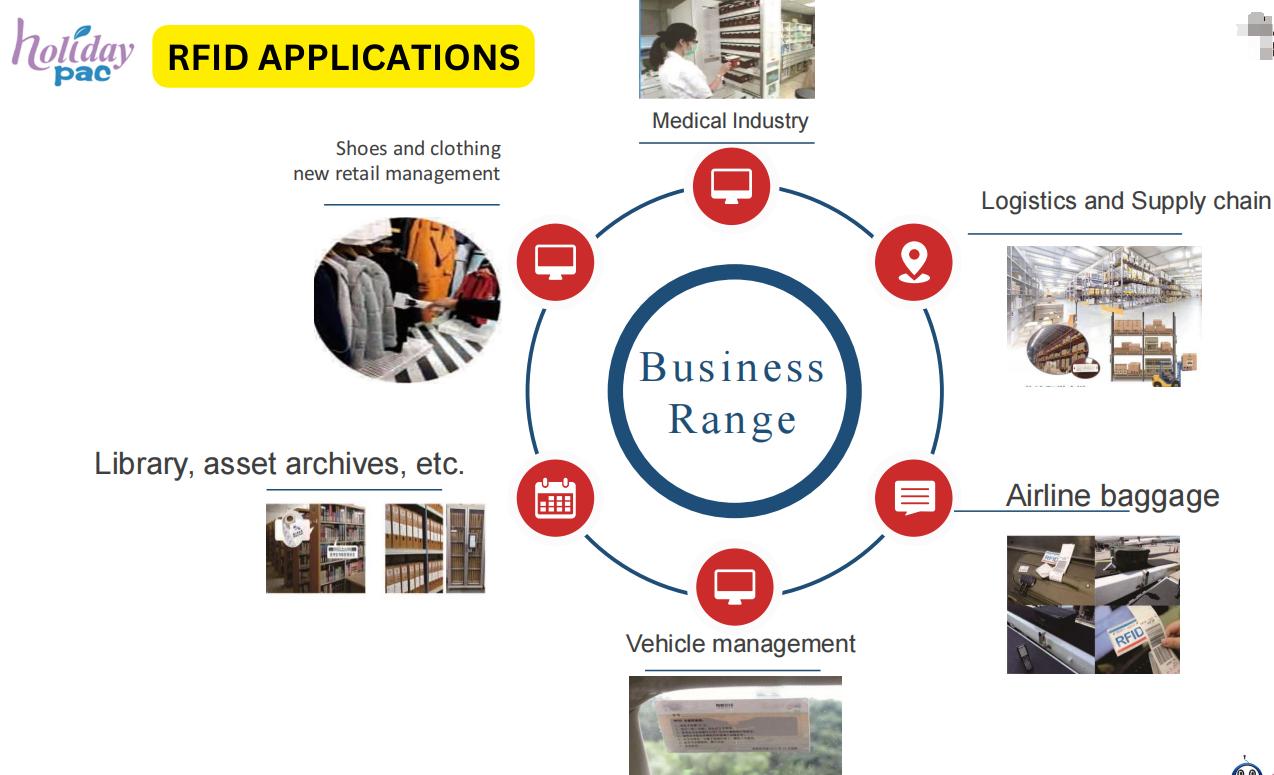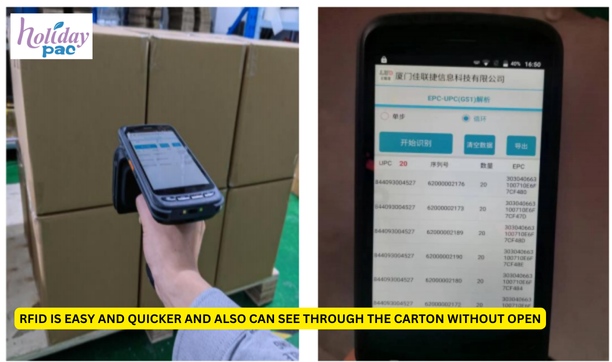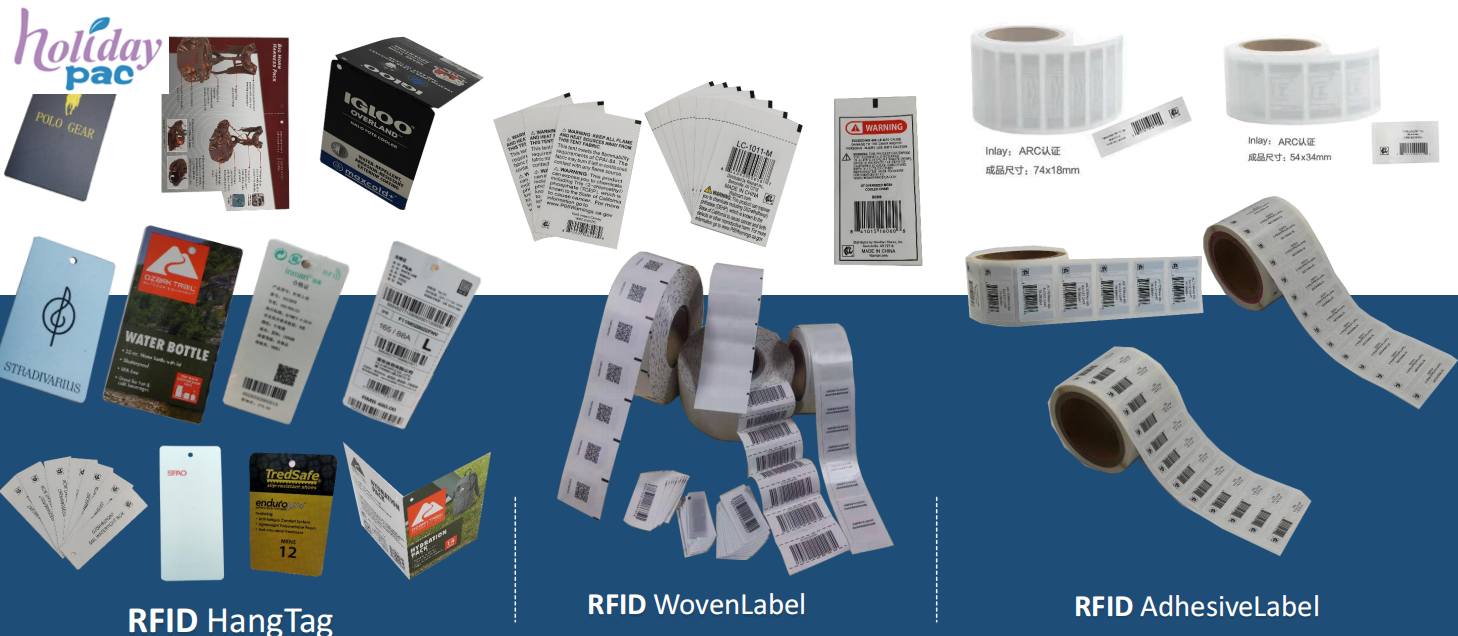What Is The Working Principle of RFID-Holidaypac
Holidaypac
2024-10-22
2674
How RFID Works
RFID technology operates by enabling a reader to communicate with a tag using radio waves. The tag, which contains an integrated circuit and an antenna, transmits data back to the reader when activated. This communication can occur without requiring a direct line of sight, unlike traditional barcode systems, making RFID particularly advantageous for various applications
Types of RFID Tags
- Passive Tags: These tags do not have their own power source; instead, they are powered by the radio waves emitted by the reader. They are typically smaller and less expensive.
- Active Tags: These contain a battery and can transmit signals autonomously, allowing for longer read ranges but at a higher cost

Applications of RFID
RFID technology is employed across multiple industries for various purposes, including:
- Inventory Management: Tracking stock levels and locations in real-time.
- Asset Tracking: Monitoring valuable items or equipment.
- Personnel Tracking: Managing employee access and attendance.
- Supply Chain Management: Enhancing visibility and efficiency in logistics
- Healthcare: Ensuring correct medication administration and monitoring equipment

Advantages Over Barcodes
RFID offers several key advantages over traditional barcode systems:
- Non-Line-of-Sight Reading: RFID tags can be read without direct visibility, allowing for faster processing.
- Higher Data Capacity: RFID tags can store more information than barcodes.
- Durability: RFID tags are less susceptible to physical damage compared to barcode labels
What Are The Differences Comparison of RFID and Barcode Technology
RFID (Radio Frequency Identification) and barcode technologies are both widely used for tracking and identifying items, but they differ significantly in functionality, efficiency, and application. Here’s a comparison based on key factors:

Comparison of RFID and Barcode Technology
|
Feature
|
RFID
|
Barcode
|
|
Technology
|
Uses radio waves to communicate between tags and readers.
|
Relies on optical scanning of printed patterns.
|
|
Data Storage
|
Can store larger amounts of data, including unique identifiers and additional information.
|
Limited data storage, typically just a product ID.
|
|
Readability
|
Can be read without line-of-sight and can scan multiple tags simultaneously.
|
Requires direct line-of-sight for scanning each item individually.
|
|
Range
|
Can read tags from several feet away, depending on the type of tag and reader.
|
Typically requires close proximity to the scanner.
|
|
Durability
|
More durable and resistant to damage from environmental factors (e.g., moisture, dirt).
|
Susceptible to wear and tear; can become unreadable over time.
|
|
Cost
|
Generally higher initial costs due to the price of tags and readers.
|
More cost-effective and easier to implement in many scenarios.
|
Advantages of RFID Over Barcodes
- Speed and Efficiency: RFID technology allows for the simultaneous reading of multiple tags, significantly speeding up processes like inventory management compared to barcode scanning, which is done one item at a time
- Automation: RFID can automate tracking processes, reducing human error associated with manual barcode scanning
- Non-Line-of-Sight Capability: RFID does not require a direct line of sight, enabling users to scan items even if they are stacked or obscured
- Real-Time Data Access: RFID systems can provide real-time updates on inventory status, enhancing operational efficiency

Limitations of RFID Compared to Barcodes
- Cost: The initial setup cost for RFID systems is generally higher than that for barcodes, making it less accessible for small businesses
- Signal Interference: RFID signals can be disrupted by materials such as metal or liquid, which may limit their effectiveness in certain environments
- Complexity: Implementing an RFID system can be more complex due to the need for specialized hardware and software integration
Contact with us by [email protected] or whatisapp+86 18124670856






